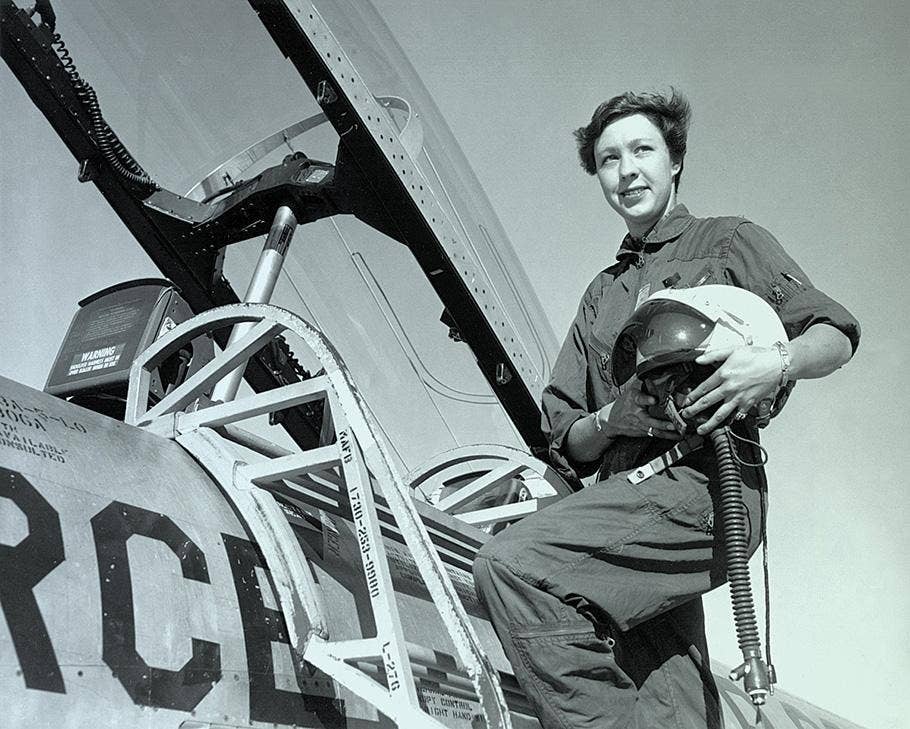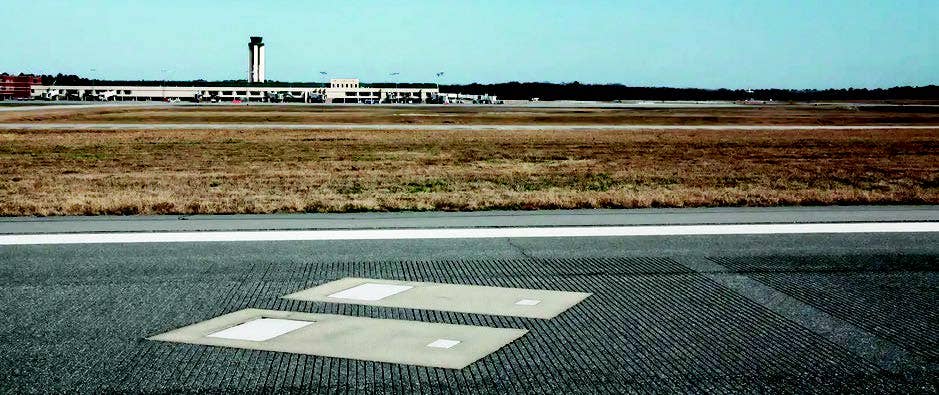In Depth with an ‘Airport Kid’
Raised at Maule Field (3NP), Keith Phillips is a tireless advocate for homebuilts, the EAA, and his airpark at Spruce Creek, Florida (7FL6).

Keith Phillips is as passionate about building aircraft as he is about flying them. [Credit: Sara Withrow]
It’s 8 A.M. Saturday, and a large group of pilots gathers beneath “The Tree” at Spruce Creek Fly-In (7FL6). Keith Phillips, the leader of the weekly Gaggle Flight, provides the formation briefing. Up to 80 pilots attend the briefing, but they don’t all fly. “If it’s a nice day, we’ll have about 30 to 40 airplanes,” Phillips says.
The weekly tradition started in the mid-’80s when Phillips suggested he and a few friends fly in formation to their favorite breakfast spot. “I did a basic formation briefing,” he says, and sketched their positions on the back of a napkin. During the requisite debrief, Phillips says he made the mistake of saying, “That was the damnedest gaggle that I’ve ever flown in.” To his chagrin, the “gaggle” moniker stuck. “It’s kind of demeaning. But it’s one of those things that got away. You can’t get it back,” he says. Today, the Spruce Creek Gaggle Flight has about 100 members. The Gaggle frequently performs fly-overs for Little League opening days, veterans’ events, honor flights, and city festivals—like Daytona Beach Jeep Week—and has been recognized with multiple proclamations.
If you're not already a subscriber, what are you waiting for? Subscribe today to get the issue as soon as it is released in either Print or Digital formats.
Subscribe NowA former fighter pilot, Phillips is accustomed to more precise formation flying. He retired from the Air Force in 1977 as a lieutenant colonel and became an aerospace consultant for Litton Industries, General Dynamics, and others. Phillips grew up in the 1940s and ’50s near Maule Field (3NP) in Napoleon, Michigan. At 12, he started working after school and weekends for Belford D. (B.D.) Maule, who invented a light tailwheel, operated a tool milling and sharpening shop, and built TV towers and antennas. Maule later developed his signature aircraft and moved his operation to Moultrie, Georgia. Working there, Phillips learned skills that he still uses today. “I call it people’s liberal arts education. I didn’t learn a lot in school, but I learned a lot at the airport.”
An advocate for the Experimental Aircraft Association (EAA), for which he served as president of the Daytona Beach Chapter (No. 288) for nine years, he is as passionate about building aircraft as he is about flying them. An FAA Wright Brothers Master Pilot and Charles Taylor Master Mechanic, A&P/IA, and EAA technical counselor, he has built a Swearingen SX300, a Pitts Model 12, and a hybrid Wittman Tailwind/Nesmith Cougar. Phillips talked recently with FLYING about his passion for aviation, homebuilt aircraft, and his airpark community.
FLYING Magazine (FM): Describe your early pilot training experience at Maule Field?
Keith Phillips (KP): When you’re around an airport, you know, it’s like a farmer’s kid, you learn to drive by osmosis. You never remember really learning to drive. You’re expected to drive. It’s the same with flying. In those days, the GI Bill was a big thing for learning to fly. In ’46, ’47, ’48, every little town airport, they’d have a fleet of J3 Cubs, or Luscombes, or Taylorcrafts to teach GI Bill flying classes. That gave you ample opportunity to learn to fly. I actually learned to fly without a CFI. They’d [ad hoc instructors] get their GI Bill, they soloed and got their private and said, “Come on kid, help me with this and do that, and I’ll give you a ride in the airplane.” I had a student license but never was signed off.
FM: You have owned quite a few airplanes over the course of your lifetime. What was your first airplane?
KP: When I was a junior in high school, I bought a 1941 J4 Cub. But I, of course, didn’t have the money to buy it, so B.D. [Maule] bought it. It cost $400. I put in $200 and he put in $200 for Shirley, his daughter. She really didn’t have any interest in learning to fly and never did, so I ultimately bought her half out.
FM: What aviation mentors have had the biggest impact on you and how?
KP: I had a couple of schoolteachers who were World War II guys. I basically grew up with no father image; even though my mother got remarried, he was a stepdad and was brand new to me. One of the principals in the high school was a C-47 pilot in World War II [Gordon Smith]. Another teacher was a P-47 pilot [Mr. Goodrich]. They encouraged me. But if you did something stupid, they told you about it. I flew under some wires one time when we went to a football game over in one of the towns. Raymond [Maule] and I flew our airplanes over there and landed next to the athletic field, and when we left, I flew under these wires, and the principal saw that and he really chewed me out. They certainly had an influence on me, but nothing like B.D. [Maule]. He wasn’t a good mentor, but he created the environment that allowed me to fly. I wouldn’t have been able to buy the airplane without him. I was making 35 cents an hour; $400 was a big hit.
FM: As an older pilot (Phillips turned 88 in June), are there any challenges that you’ve had to adapt to?
KP: It’s a hell of problem with things like insurance. They told me last year, “Next year, you must have a pilot.” So, I wrote a little note back to them saying, “What am I?” In order to have my insurance valid, I have to have a pilot in the airplane with me that has 25 hours in type, and he’s got to be this and that, etc. So, in essence, if I’m flying my airplane without anybody on board, I’m not covered. That is the biggest impediment that I find. I feel that my skills are still good enough so that I’m safe.
FM: You’ve built three aircraft of your own, contributed to building countless others, and were honored in 2016 with the EAA Tony Bingelis Award for your contributions to the homebuilt community. Why do you champion homebuilts?
KP: I grew up on a farm and then later the airport, and I was always building or doing something with machinery. I have a passion for it. The flying and the building are fulfilling to me. You can be creative, and one thing that EAA has done is they have deployed a degree of standardization and so forth. Early on, there were some really bad homebuilt aircraft. But over the years, standards have come way up, and thanks to Van [Richard VanGrunsven].
FM: What inspired you to build your first airplane, the hybrid Wittman Tailwind/Nesmith Cougar?
KP: In 1956 or ’57, we were at the Rockford Air Show, and I got a first ride in a Wittman. By then, I was a lieutenant in the Air Force. I was in love with little airplanes. I went over there with B.D. [Maule] in his Bellanca. I had a ride in Bud Harwood’s Wittman Tailwind and I said, “This thing is a performing fool.” When you compared it to an average little airplane of that day, it was 40 to 50 knots faster. Prior to U.S. Air Force flying, I was used to J3/J4Cubs’ performance, and that Bellanca was a rocket, and it was still slower than that Wittman. I said, “Man, I gotta have one of these.” I liked that you could make changes, as long as they didn’t impact the airworthiness.
FM: Which of your homebuilt aircraft was the most challenging to build and why? What’s your favorite to fly?
KP: The SX300, by far. It’s a very complex airplane. It goes fast, it’s got a high wing and the gear retracts. Because it goes fast, it’s more rigid [and] it takes more work. And the way Ed [Swearingen] designed it. Ed’s a good designer, but he didn’t have the genius of Steve Wittman or Van. They build things simple. If you can do something with one piece where somebody else takes 10 to do it; like the landing gear [on a Van’s RV], there is nothing there but apiece of rod. The average homebuilder wouldn’t want to get into an SX300. The SX300 is my favorite [to fly]. It makes me feel like a fighter pilot. It goes fast, [and takes] very little effort to fly, cruis[ing] at about 265 knots.
FM: As a lifetime EAA member since 1959 and the former president of one of the largest EAA chapters (No. 288), what is the secret behind your chapter’s success?
KP: When I first got here [Spruce Creek] in 1985, I joined the chapter. They were having their meetings at Embry-Riddle Aeronautical University in one of their academic rooms. It was only 15 to 20 people. And then we had meetings out here, hangar tours. We had twice as many people at the hangar tours as we’d have at the meetings. The chapter has 245 paid members and 425 on its roster.
FM: You’ve lived in Spruce Creek in Florida since 1985. What does the fly-in community mean to you?
KP: It’s kind of like heaven. They say when you die here, it’s a lateral move. If you’re an airport bum like I am, I just enjoy airplanes, I enjoy the people, I enjoy helping people, and it’s good flying.
- READ MORE: Paying It Forward
Quick 6
Who is the one person living or dead that you would most like to fly with?
Bob Hoover
If you could fly any aircraft that you have not yet flown, what would that be?
The F-22. It lives in a world of its own. It flies supersonic in military power.
What is one airport you love to fly into?
Umatilla Municipal Airport (X23). It’s a great bunch of people, and they have three airport cars so you can drive to the restaurants.
What do you believe has been aviation’s biggest breakthrough event or innovation?
The jet engine.
If you could build another airplane, what would it be?
Vans RV-15, but it’s not on the market yet. When not flying, I’d rather be...Building an airplane.
This article first appeared in the July 2023/Issue 933 print edition of FLYING.

Subscribe to Our Newsletter
Get the latest FLYING stories delivered directly to your inbox







